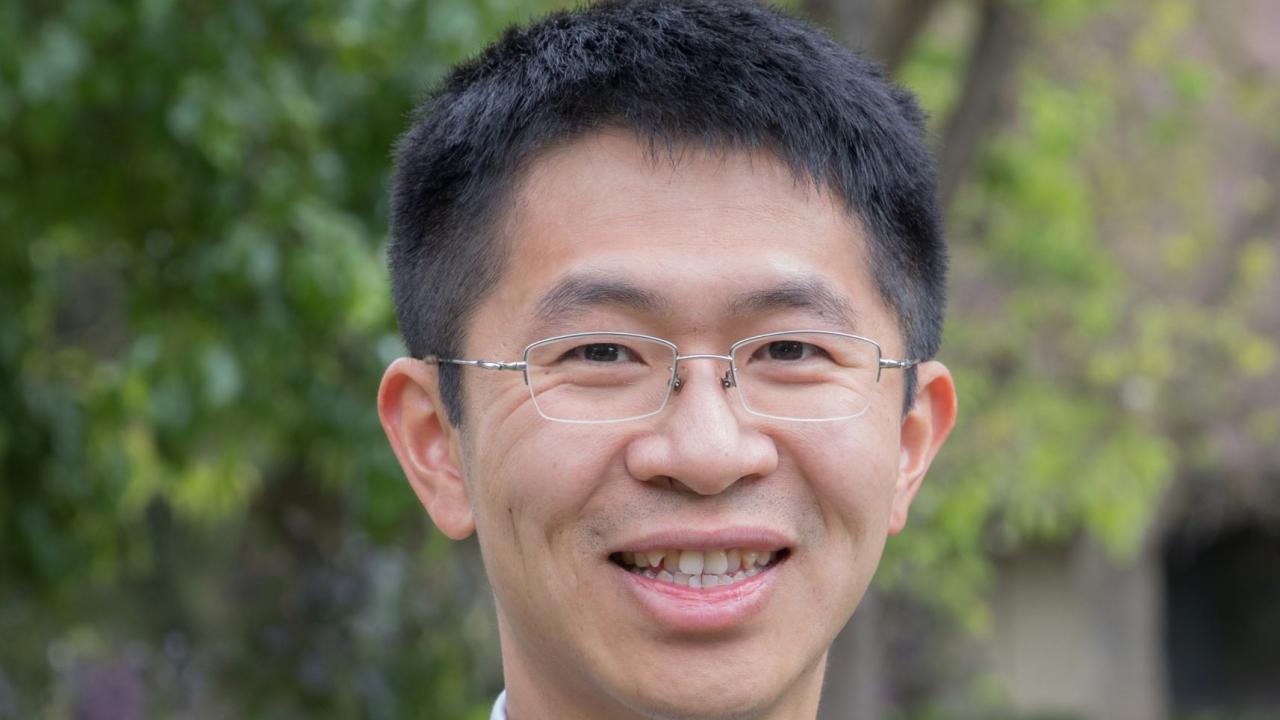
Faculty Spotlight: Assistant Professor Weijian Yang, Ph.D.
Assistant professor Weijian Yang’s scientific journey is illustrative for the field of neuroengineering: it started with undergraduate and graduate degrees in electrical engineering, followed by postdoctoral fellowships in biology with a focus on neuroscience research, and continuing with interdisciplinary research where he combines optics, electronics, and nanotechnology to address challenges in brain research, biomedicine, and neuroscience.
His passion for research started in college when he worked in ultrafast optics and developed novel mode-locked fiber lasers for metrology. Research projects in graduate school spanned theory, devices, circuits and systems in optoelectronics, aiming to explore the novel functionalities of integrated optics and expand the scale of photonic integration. Dr. Yang’s graduate research work yielded more than 60 publications, many of which are first-author publications in prestigious journals and conference proceedings.
One of the most significant bottlenecks in advancing neuroscience today is the lack of advanced engineering tools to investigate this most complicated yet delicate biological system that is the brain. Wanting to dedicate his career to an impactful area as a newly minted Ph.D., Dr. Yang decided to focus on developing such advanced tools applied specifically to neuroscience. Thus, he joined professor Rafael Yuste’s lab at Columbia University to develop 3D holographic imaging and photoactivation systems to study the brain activity map in the mouse cortex. He built novel two-photon microscopes for multi-plane high-speed imaging and 3D holographic optogenetics. He is among the first to demonstrate the feasibility of simultaneous imaging and optical manipulation of neuronal activity over a 3D brain volume with cellular resolution in awake mice. Using these advanced microscopy tools, Dr. Yang and his colleagues were able to modulate a mouse’s behavior by triggering the activity of neuronal ensembles (groups of neurons that are functionally coherent), which become the building blocks of large-scale circuitry to drive the brain machinery). They demonstrated an efficient approach to modulating behavior, which opens the tantalizing possibility of correcting the pathophysiology of mental disorders. His work and promise for discoveries were recognized with the highly prestigious Career Award at the Scientific Interface from the Burroughs Wellcome Fund.
Dr. Yang joined UC Davis as an assistant professor in electrical and computer engineering in late 2017. Here he found the right collaborative environment that enables his research pursuits in the multidisciplinary field of brain research, combining optics, electronics, nanotechnology, and computational science to tackle scientific questions in biomedicine and neuroscience. His lab develops advanced optical microscopes, portable and implantable electrical and optical devices, and computational tools to record, stimulate, and decode brain activity. Professor Yang and his colleagues study neuronal circuits’ structure and function using these tools. More recognitions and awards followed, including the prestigious Early CAREER Award from the National Science Foundation in 2019 for his project to develop a non-invasive multiplexed multiphoton microscope for interrogating neural circuits across large brain regions.
When asked which work he was proudest of so far, Dr. Yang mentioned the two-photon microscope that can simultaneously perform 3D calcium imaging and 3D holographic optogenetics. This is highly promising for neuroengineering, as it enables precise closed-loop control of brain activity. Indeed, the future of neuroengineering depends on access to precise interfaces between the nervous system and machine, coupled with the ability to modulate brain activity with high spatial and temporal specificity, meaning cellular resolution and millisecond time scale, respectively. Yang’s microscope provides exactly such an interface. This tool will aid scientists in studying the functions of the nervous system and has great promise for developing new neuroprosthetic and rehabilitation techniques to treat neurological disorders.
For this work, Dr. Yang was recently named a finalist for the Science and PINS Prize for Neuromodulation, a prize co-sponsored by the American Association for the Advancement of Science (AAAS) and Beijing’s PINS Medical Equipment Co. Ltd., a high-tech enterprise focused on neuromodulation. His research project was published by the Science Magazine, one of the leading publications of AAAS, as described in a previous article and a webinar organized by AAAS. In parallel, Dr. Yang is actively expanding the computational imaging techniques he developed in the last few years and optimizing them for high-throughput brain imaging applications.
While our knowledge of the intricacies of the human nervous system has grown rapidly, such developments will only continue to accelerate, enabled by new advanced engineering tools. Professor Yang envisions his lab will continue its contributions to neuroengineering and neuroscience through the development of advanced tools, particular imaging and interventional tools, and their use to investigate the functional organization and plasticity of neural circuits, leading to applications in precision medicine for addressing neurological disorders.
